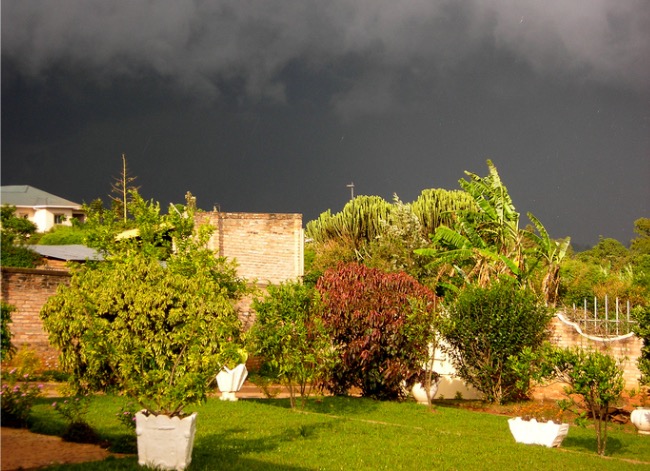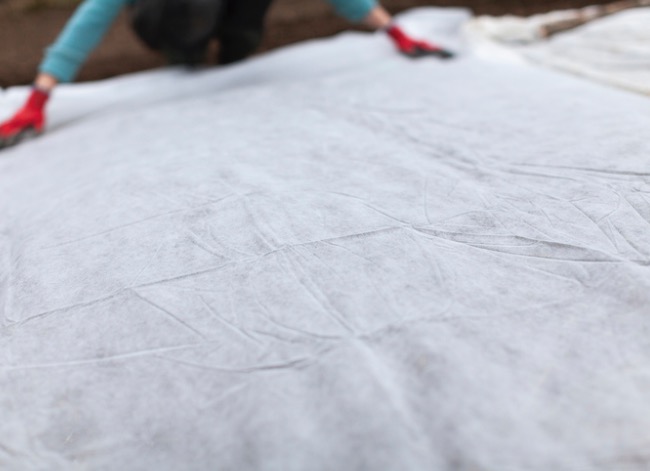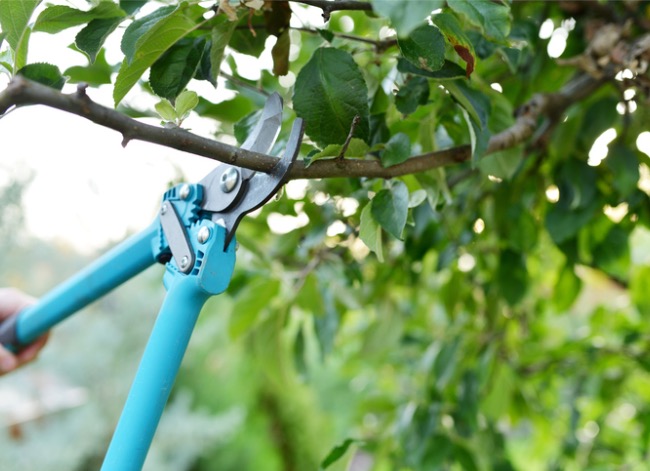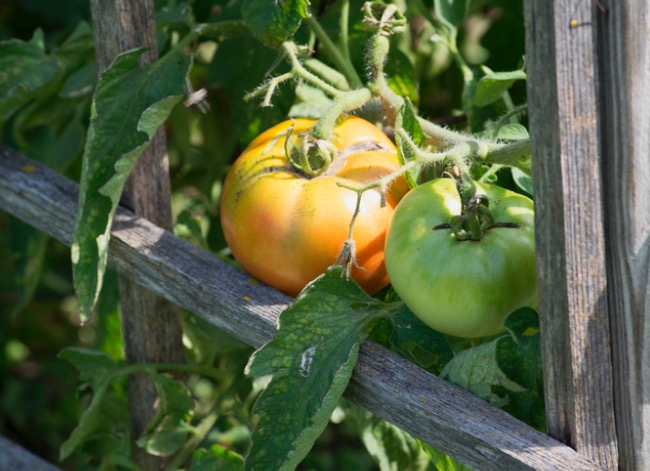

We may earn revenue from the products available on this page and participate in affiliate programs. Learn More ›
Flowers, bushes, and shrubs turn a plain yard into a thing of beauty, but storms with torrential rains and whipping winds can wreak havoc on plants and trees, damaging or destroying them. Fortunately, gardeners and DIY landscapers have some options for helping keep plants safe during storms.
Some precautions can be taken on the spur of the moment just before a storm hits, while others should be put in place in advance to give plants the best shot at weathering storms. Ahead, discover some tips that will help outdoor plants survive stormy weather.
Cover Them Up
High winds can damage tender stems and blossoms. When a storm is brewing, covering plants is the first line of defense. Protect individual plants by covering them with overturned buckets, large bowls, and even laundry baskets. Weight the items down with bricks or blocks to keep the wind from toppling them.

Prep Pruning
A properly pruned tree is a healthy tree. Prune trees regularly to remove dead and diseased branches, and the tree will be in better shape to withstand the ravages of a surprise storm. Besides keeping the tree strong and healthy, removing dead limbs reduces the risk of high winds snapping them off or turning them into airborne projectiles during a hurricane or tornado.

Bring Them Inside
A summer storm that brings torrential rain or hail can devastate potted plants. If possible, move the pots inside the home’s entryway, a screened porch or patio, the garage, or a storage shed to protect them. If no indoor space is available, consider putting the potted plants under an overhang or tucked into a corner to offer some storm protection.
Support Tall Plants
Towering tomato plants, okra, and other tall-growing vegetables and flowers will weather a windy storm better if they have a little extra support. Use trellises, tomato cages, and garden obelisks to support the plants. Not only will the additional support offer a measure of protection in a storm, it also can reduce the risk of diseases by increasing air circulation around the plants as they grow.

Design for Drainage
Unless you’re growing a plant that will tolerate soggy soil, such as canna or cattail, standing water can spell trouble. Many plants do not like “wet feet,” and roots can rot if the soil is sopping wet. In areas where the soil doesn’t drain well, consider planting in raised beds. Also, by amending heavy clay soils with compost, gardeners can encourage better draining, so storms with heavy rains pose less risk.
Lay Trellises Down
If a storm with high winds is predicted, consider laying down trellises that are supporting vines. Depending on the plant, this may not be possible if the base stem is thick and brittle, but flowering vines with supple stems can be laid along the ground (trellis and all) where they’re protected from the worst of the wind. After the storm passes, stand them back up and brace them in place.
Related: The 12 Best Climbing Roses for Your Garden Trellis, Arbor, or Pergola
Mulch Ahead of Storms
Heavy rainfall can result in running water that washes away newly planted flowers and vegetables, but adding 2 to 3 inches of mulch around the base of a plant will help stabilize the soft soil. Keep the mulch a couple of inches away from the plant’s foliage, however, to avoid encouraging disease.

Plant a Windbreak
One of the oldest and most reliable methods of protecting plants from storms with high winds is to plant a windbreak. This is not an overnight fix. It’s a long-term solution for regions that see frequent storms with high winds.
Dense, tall-growing trees, such as emerald arborvitae or Spartan juniper, grow 1 to 2 feet per year and will eventually form a protective windbreak. For an immediate windbreak, consider creating a temporary wall with two courses of straw bales, weighted down with bricks or stones to offer some wind protection.
Wrap and Secure
Plants that are too big to cover with buckets can be wrapped with burlap and secured with twine or string to protect their tender foliage before a storm hits. For added protection, consider inserting a tall stake near the base of the plant and secure the wrapped plant to the stake.
